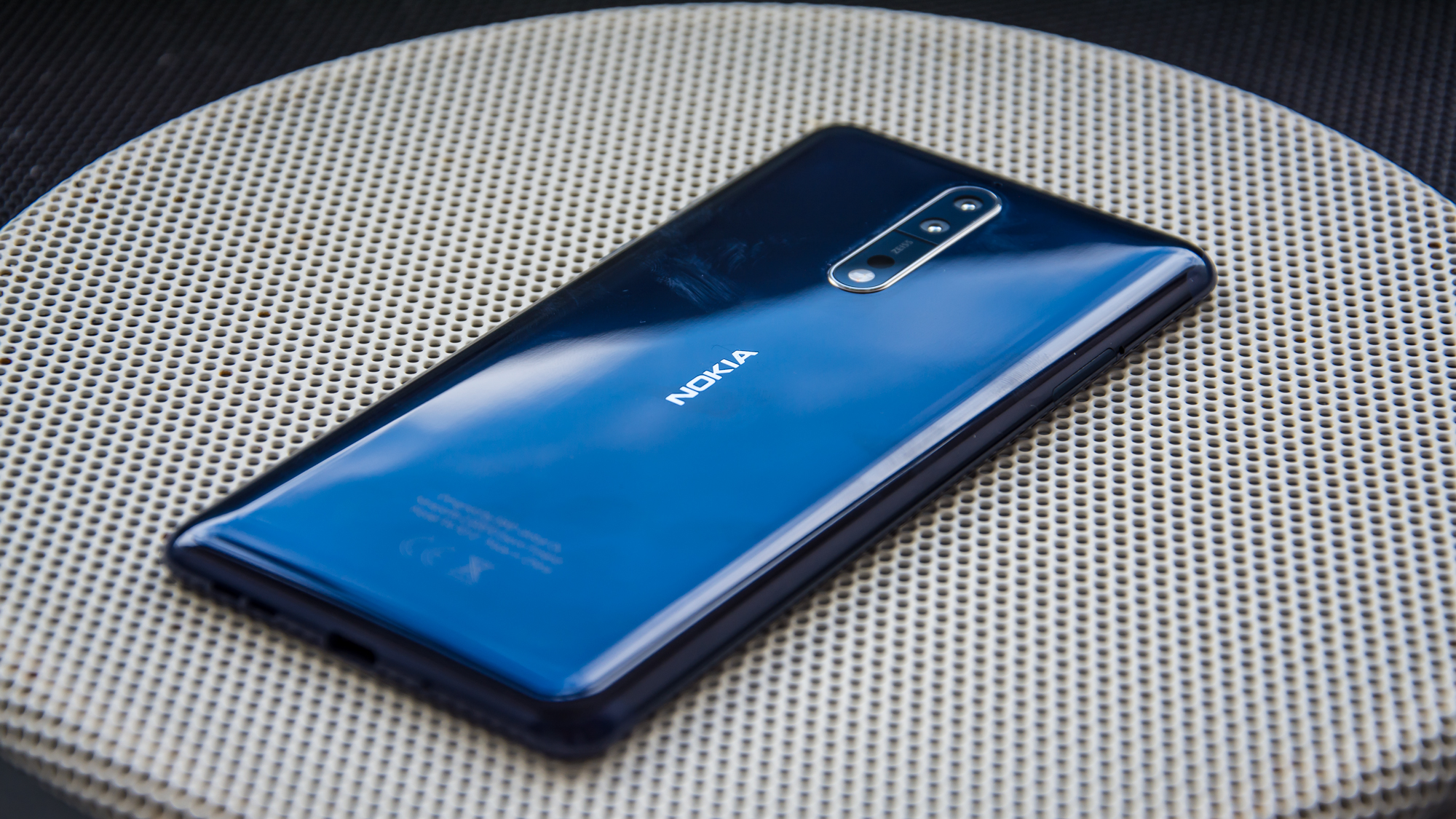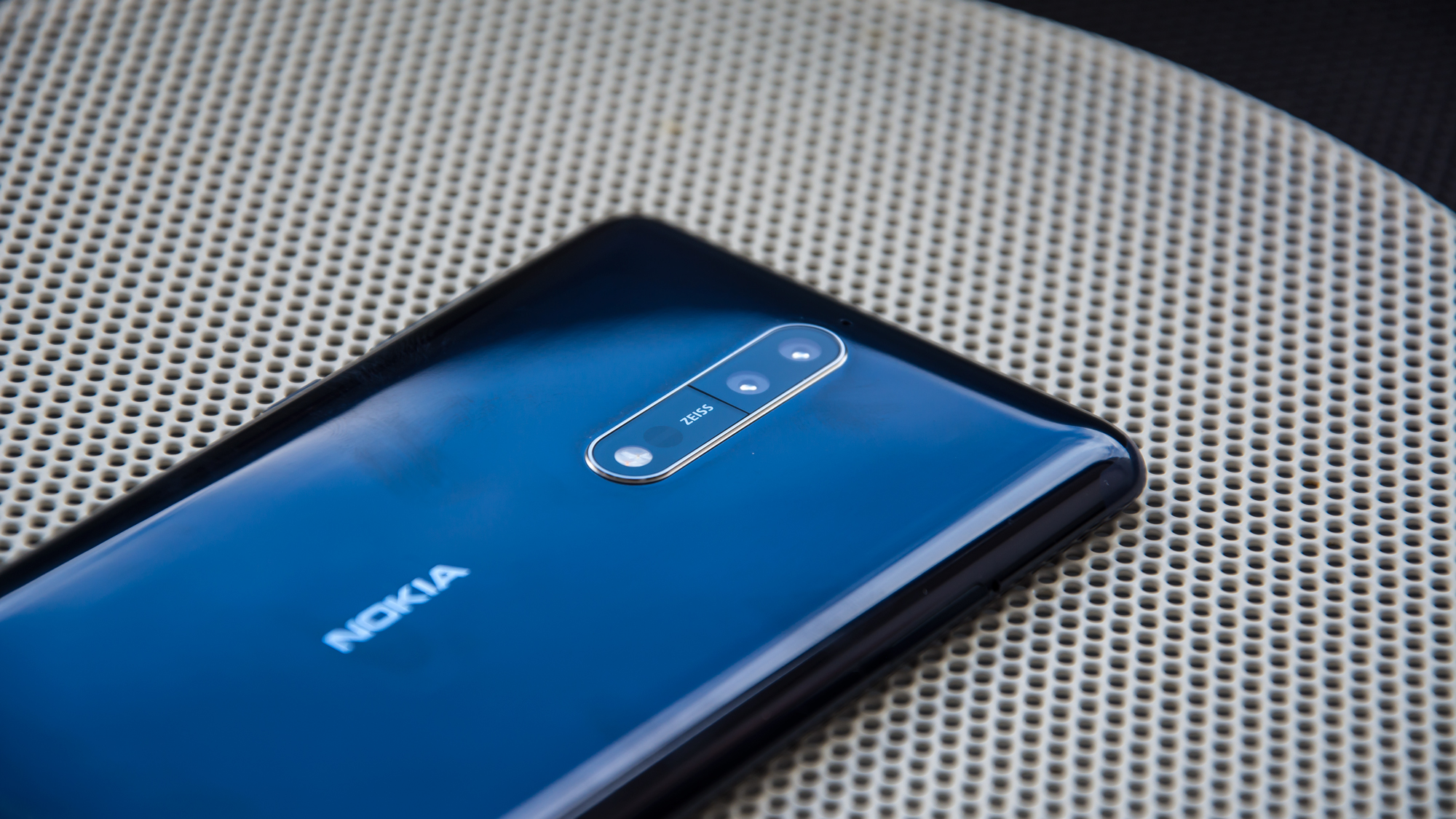Nokia 8 review: a blast from the past
Nokia returns from the dead with an affordable flagship smartphone
While the Nokia 8 is technically competent, there's little here to inspire or excite. For added extra features, the similarly priced Google Pixel represents a more attractive option.
-
+
Good battery life; Speedy performance; Runs stock Android
-
-
Disappointing camera quality

If there's one company that few people expected to see back in the smartphone game in 2017, it's Nokia. The once-proud Finnish tech firm has experienced a tragic fall from grace over the last few years, going from being one of the most respected and popular mobile phone makers in the world to selling its mobile division to Microsoft in 2014, which was then quietly shuttered it.
That was not the end, however; the rights to the Nokia name are now owned by HMD Global, an eight-month-old Finnish company created specifically to resurrect the Nokia smartphone brand. Its first outing was the budget Nokia 3, which received a somewhat lukewarm response.
The company hopes to create more of a buzz with its first flagship device, the Nokia 8. Sporting Zeiss optics, the very latest internal hardware and the purest Android experience, it's making a concerted effort to reclaim the top spot Nokia last held in the early 2000s. Does the device live up to Nokia's old reputation, or will it receive the muted welcome of the updated 3310?
Design and display
For its first flagship Nokia device, HMD has chosen to go down the common route of using an aluminium unibody. The rear of the phone is rounded, with an average thickness of 7.3mm that tapers to 4.5mm at the edge.

It's a fairly unremarkable design, with no visual flourishes or stand-out features to draw our attention. It's not particularly brash, but it does have a certain simplistic elegance. The appearance of the handset is not dissimilar to the OnePlus 5 - the only difference is that the Nokia 8 is available in both matte and mirror-finished colour schemes.
Personally, we prefer the matte versions, as the shiny colour options tend to look somewhat tacky and pick up fingerprints very easily. The shiny versions also feel a lot more slippery in the hand, thanks to a combination of the finish and the tapered edges. However, we know plenty of people that prefer shiny smartphones over matte options.
The Nokia 8 uses a 5.3in display, with a QHD resolution and a 554ppi pixel density. There's no snazzy extra features like the curved edges, HDR or edge-to-edge displays found on other phones, but what you do get is a very competent display, with a bright screen and vibrant colours.
Camera
HMD is making a big song and dance about the Nokia 8's camera. The manufacturer rekindled Nokia's old partnership with legendary lensmaker Zeiss earlier this year, a partnership which led to some of the most widely-lauded smartphone cameras around in years past.
The Nokia 8 is the first device to bear the fruit of this renewed collaboration, and the dual-lens camera setup proudly bears the Zeiss Optics branding. Unfortunately, that's not as much of a watchword for quality as HMD would have you believe. After all, lenses are arguably the least important element of a smartphone camera - far more important is the sensor technology and image processing software used to actually capture the photos.

This is what lets the Nokia 8 down - the Google Pixel and Samsung Galaxy S8 both outclassed it when taking low-light pictures, and even the OnePlus 5 produced superior shots. Pictures taken with the Nokia 8 had more noise, with colours blown out compared to the other phones we tested it against. It's not a huge difference, but it is noticeable.
The Nokia 8 has one more trick up its sleeve that it hopes will convince you, though, and that's 'dual-sight' mode. This camera mode combines the image from the front and rear cameras, allowing you to capture your reaction, in addition to whatever it is you're shooting. HMD calls this a 'bothie' (as opposed to a selfie) and is also building livestreaming features into the camera app so you can stream your dual-sight footage to Facebook and YouTube.
Get the ITPro daily newsletter
Sign up today and you will receive a free copy of our Future Focus 2025 report - the leading guidance on AI, cybersecurity and other IT challenges as per 700+ senior executives
Adam Shepherd has been a technology journalist since 2015, covering everything from cloud storage and security, to smartphones and servers. Over the course of his career, he’s seen the spread of 5G, the growing ubiquity of wireless devices, and the start of the connected revolution. He’s also been to more trade shows and technology conferences than he cares to count.
Adam is an avid follower of the latest hardware innovations, and he is never happier than when tinkering with complex network configurations, or exploring a new Linux distro. He was also previously a co-host on the ITPro Podcast, where he was often found ranting about his love of strange gadgets, his disdain for Windows Mobile, and everything in between.
You can find Adam tweeting about enterprise technology (or more often bad jokes) @AdamShepherUK.
-
 ‘Phishing kits are a force multiplier': Cheap cyber crime kits can be bought on the dark web for less than $25 – and experts warn it’s lowering the barrier of entry for amateur hackers
‘Phishing kits are a force multiplier': Cheap cyber crime kits can be bought on the dark web for less than $25 – and experts warn it’s lowering the barrier of entry for amateur hackersNews Research from NordVPN shows phishing kits are now widely available on the dark web and via messaging apps like Telegram, and are often selling for less than $25.
By Emma Woollacott Published
-
 Redis unveils new tools for developers working on AI applications
Redis unveils new tools for developers working on AI applicationsNews Redis has announced new tools aimed at making it easier for AI developers to build applications and optimize large language model (LLM) outputs.
By Ross Kelly Published
-
 Google layoffs continue with "hundreds" cut from Chrome, Android, and Pixel teams
Google layoffs continue with "hundreds" cut from Chrome, Android, and Pixel teamsNews The tech giant's efficiency drive enters a third year with devices teams the latest target
By Bobby Hellard Published